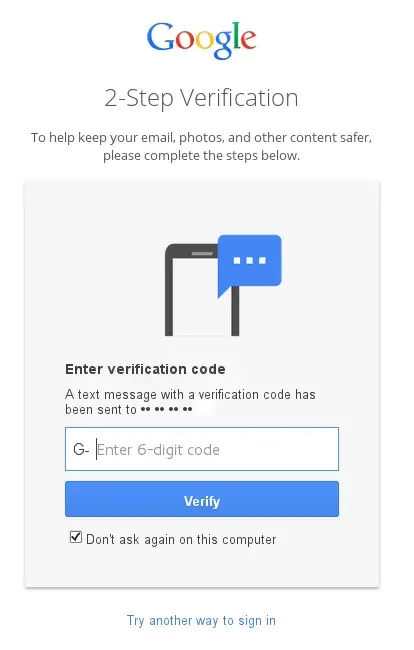A verification code is a security feature most applications use to ensure that the person using the app or signing is authentic. It involves sending a few numbers or alphanumeric digits to a user’s registered mobile number, which the user has to enter into the app interface within a few seconds. Only when the user enters the correct set of digits does the app sign in or allow the user to use a particular feature. The software giant Google also used the same security feature to verify genuine users. However, if you have received a Google verification code without requesting it, it may or may not be a serious issue. Read on to find out more about Random Google verification code text.
Also Read: Does a VPN Hide My IP From Google? Things You Must Know!
Why Did I Receive A Google Verification Code Without Requesting It
One might receive a Google verification code without requesting it for many reasons. We have discussed a few reasons below:
Reason 1: Someone Is Deliberately Trying To Access Your Account
A common reason for receiving OTP codes you didn’t request is that someone else is trying to access your account. This indicates that your login credentials might have been compromised, allowing unauthorized access to your account. If you receive an unexpected OTP code, promptly change the password for your account to secure it.
Reason 2: Someone Is Accidentally Trying To Access Your Account (typo error)
A possible reason for receiving an OTP code you didn’t request is that someone may have mistakenly entered your username, email address, or phone number without malicious intent. Some apps and websites only require a username and OTP code for access, bypassing the need for a password. For instance, if your username is Hello123 and someone else’s is Hell0123, a simple typo could explain why you received the OTP without attempting to access your information.
Also Read: Google Suspicious Sign-in Attempt Prevented Email Scam – Everything You Should Know
Reason 3: Google Voice Scams

Google Voice is an online phone service that allows users to make calls, send texts, and more. To sign up for Google Voice, you’ll receive a verification code via text message from Google. It is important to keep this verification code private and not share it with anyone. If a scammer obtains this code, they can use your phone number to create a Google Voice account linked to your number. If you have mistakenly shared your verification code with someone, follow Google’s instructions to reclaim your number. If you suspect you have been scammed through Google Voice, report the incident to the FTC.
Reason 4: 2-Step Verification

If you have enabled the 2-step verification and chosen to receive the code by SMS, you will receive the Google verification code when you sign in.
Also Read: A VPN Can Enhance Your Internet Security: Here’s How!
Reason 5: Sign in from a different device on a different network
Occasionally, Google may ask you to complete an additional sign-in step in certain situations, such as:
– Signing in from an unfamiliar location or network.
– Using a new or unrecognized device.
This extra step may involve entering a verification code sent to your phone via text message.
Steps To Take If You Receive an OTP Code You Didn’t Request
If you receive an OTP code, you did not request it. It’s important to safeguard your online account and personal information immediately.
1. Change Your Password
Your login credentials may have been compromised if you receive an OTP code you didn’t request. To secure and protect your account from unauthorized access, promptly change your password.
2. Review Account Activity
Check your account for any unfamiliar activity or changes. Look for signs of unauthorized access or modifications to your settings.
3. Enable Two-Factor Authentication
Enabling two-factor authentication (2FA) enhances account security by requiring a second form of verification.
4. Contact Support
Report the issue to the service’s support team. They can help you secure your account and provide additional guidance.
5. Monitor Your Accounts
Check your other accounts for unusual activity. If you use similar passwords across multiple sites, consider updating them.
Editor’s Tip: Use Systweak VPN To Secure Your Internet ActivitiesA Virtual Private Network helps mask your IP address and ensure your identity remains anonymous while browsing online, introducing Systweak VPN, a secure app with more than 4,500 servers in 52 countries. When you surf online with Systweak VPN, you can be assured that all your online activities are hidden from everyone, including your ISP. We strongly recommend using Systweak VPN to prevent hacking and other malicious attempts on your PC because you and your activities become untraceable on the internet.
|
6. Avoid Clicking on Links in the OTP Code Message

If you receive an OTP code you didn’t request, do not click on links or download attachments from the message, as they may be part of a phishing scam. To ensure the safety of any unsolicited links, preview the URL without clicking it and use a URL checker like Google Transparency Report. When verifying the link’s legitimacy, be careful not to accidentally click on it—only copy and paste the URL for inspection.
7. Avoid Sharing The OTP Code with Anyone
An OTP code is a crucial security measure for accessing your account and should remain confidential. Never share the OTP code with anyone, even if they request it or message you. Providing this code could grant them unauthorized access to your account.
Bonus: Why Google Doesn’t Send Verification Code Sometimes
Here are some reasons why Google might not be sending a security code.
Incorrect Contact Information– A typo or outdated information could prevent the code from being sent. Ensure that your Google account’s phone number or email address is correct.
Network Issues- Temporary network problems or connectivity issues with your phone or email provider can delay or prevent the receipt of security codes.
Spam Filters or Blocked Messages– Security codes sent via email or SMS might be filtered into spam or junk folders. Check these folders to ensure the code isn’t being redirected.
High Volume of Requests- Repeated requests for security codes in a short period may lead to a temporary block. Try waiting a while before requesting another code.
Technical Glitches—Occasionally, technical issues on Google’s end may cause delays in sending security codes. However, this is usually resolved relatively quickly.
Account Issues—Your Google account might have issues that prevent the code from being sent. Verify that your account is in good standing and not experiencing any security holds.
Service Outages- Google services may occasionally experience outages or disruptions. Check Google’s status page or support channels for any ongoing service issues.
If you continue to experience issues, consider visiting Google’s Help Center or support forums for further assistance.
Final Word – Someone Sending A Google Verification Code

You can ignore and delete any text codes you receive without requesting them. Avoid sharing these codes with anyone. For personalized advice and recommendations to secure your Google Account, regularly perform a Security Checkup. Do share your experience with us in the comments section below.











